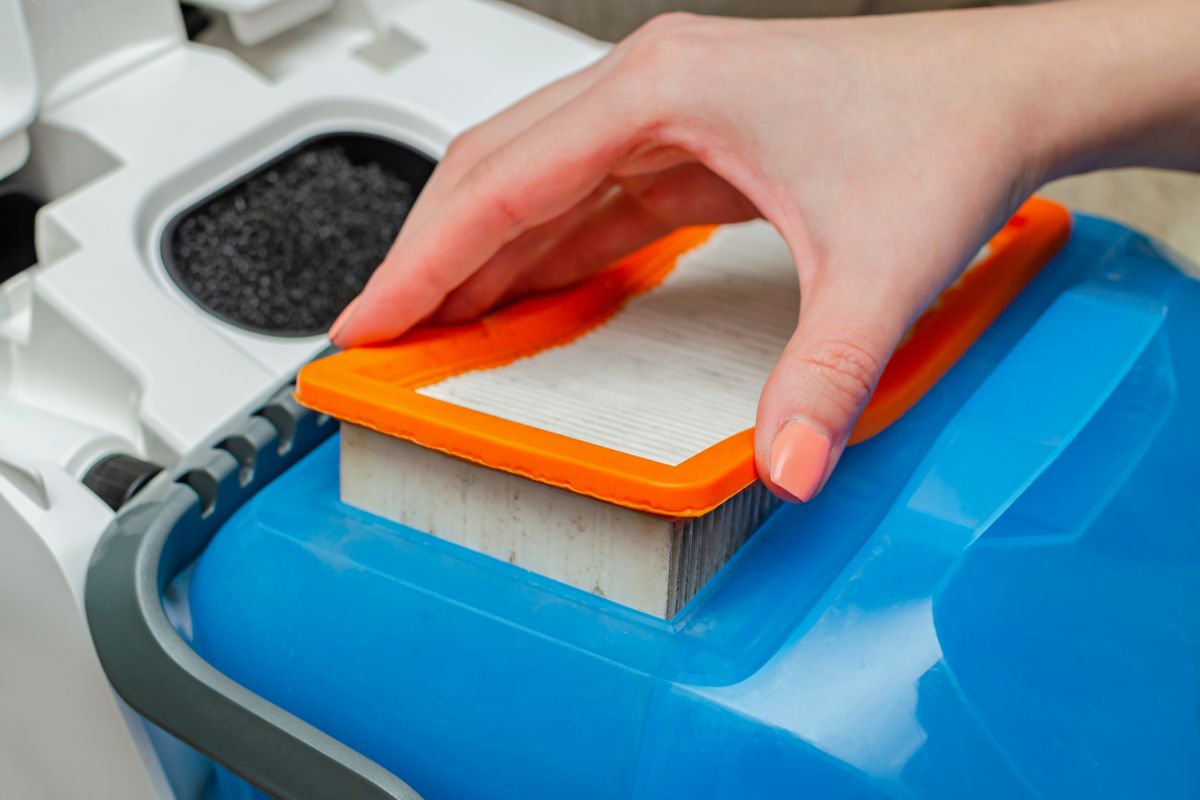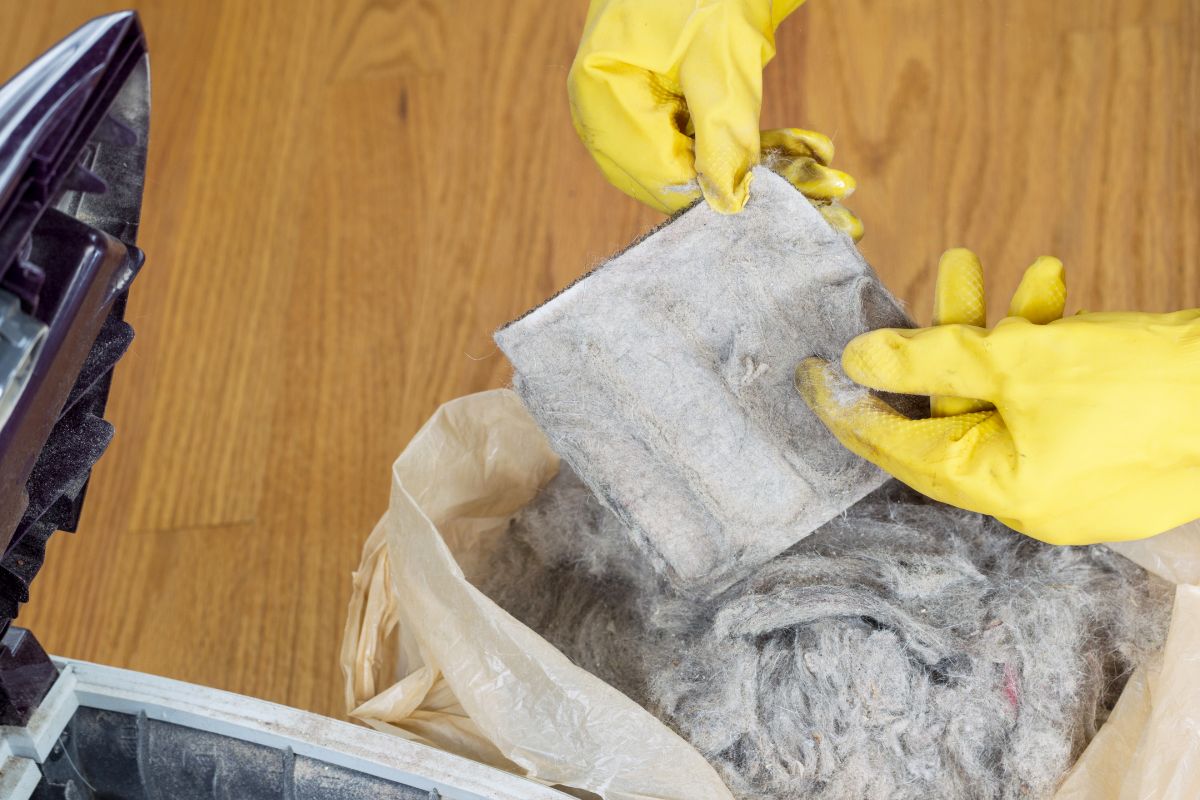Are you wondering how often you need to change Dyson air filters? Let’s talk about that.
If you use a Dyson, you know how well and efficiently they run when at full power.
As well as having great performance as well as a sleek design, Dyson vacuums are also highly acclaimed for how long they can last.
However, like with most durable technology, this requires that you upkeep the quality of the product with proper and regular maintenance.
When it comes to maintaining a Dyson vacuum, there are some obvious steps like checking the brush heads for any debris getting stuck or tangled, or making sure that there is nothing stuck inside the nozzle or pipes.
However, there is one stage of maintenance which is often overlooked in spite of being arguably the most important for keeping the vacuum working well, this is looking after and caring for the device’s filter or filters.
Dyson Air Filters
Almost every modern stick vacuum uses at least 1 filter, but it is common for complex vacuums like Dyson’s to use multiple.
These filters are what regulate the air flow within the vacuum as well as control if any particles escape out from the exhaust while running.
Because of all of the particles which the filter controls, after extended use, the filter will eventually begin to get dirty, and then eventually clog.
Once this has happened the vacuum will struggle to perform as well with the performance of the exhaust being severely limited.
These filters often have a lifespan which will be labelled in the manual of the device you have bought.
Sometimes the filters can be cleaned, dried, and then reinstalled, but even after a few cleans, the filter will eventually need replacing to be able to work properly.
Dyson’s devices also sometimes use custom air purifiers which have a more specific maintenance process but will still eventually need to be replaced.
If you have any questions about the functionality of Dyson air filters, how to clean and replace them, or anything related to this, keep reading to get the answers you need!
What Are The Different Types Of Dyson Filters?
For the most part, Dyson only use 2 different types of filters these are the 360 Glass HEPA filter and the 3600 Glass HEPA Carbon filter. Keep in mind that there are also canister and ball filters.
These are both highly qualified HEPA filters meaning the quality of their filtration reaches a high standard with how few particles it allows to escape.
These are both also designed to fit the 360 degree structure that Dyson devices utilize to make it fit properly.
This gives the filter access to all the different parts of the vacuum and makes sure all the air can get filtered.
The first of these filters is usually mostly sealed and is made from borosilicate microfibers which are in a pleated structure which stops any viruses and allergens from getting through.
The carbon filter usually includes an extra air purifier which is made to eliminate any particular odors or gases which will try and get through.
They use an activated carbon filter which uses carbon granules to capture any contaminants which will contaminate or taint your air.
There are a few types of Dyson vacuums which use a filter which combines the specific utilities of both of these filters.
How Often Should You Change Dyson Air Filters?

Depending on how often you use your Dyson as well as how dirty the areas you are cleaning are, on average, it is best to change your air filter every year, but it is always worth checking to see if it looks clogged or dirty.
Most Dyson air filters are made to withstand 4000 to 4200 hours of use before needing a replacement.
These rules are also the same for using a Dyson Air Purifier for your room, however these might need changing more often as they tend to be used more often for longer periods of time.
These devices also tend to have connected apps which will be able to directly notify you when you need to change the filter.
A lot of Dyson devices use different types of filters, so make sure to read the manual of whichever device you are using and follow the advice given for how often to change the filter.
Make sure to also check if you are using a washable or a permanent Dyson air filter. If it is permanent try to avoid exposing it to water.
But if it is washable, usually the best method of washing is to run cold water through it until it is running clear.
Make sure to let it dry until it has no signs of moisture left, this will usually take at least 12 hours.
Ensure that you do not reinstall your filter until the filter is completely dry. Installing a wet filter will most likely cause irreversible damage to your Dyson device.
How To Change Dyson Air Filters?
This stage will be different depending on your model and following the advice in the manual will be the best directions to follow, but in preparation for this, there is some basic advice to make sure to follow.
If you need cleaning instructions for the filters, we have guides for Dyson V8 and Dyson V10.
Make sure before starting any of the process that your device is turned off and unplugged, you do not want any electricity running through when you are replacing the filters.
There are usually buttons to press to release the filter so make sure you know which ones to go for, so you do not miss anything.
If you are washing your filter, make sure to be careful with it as they can be delicate, and you want to make sure it fits back into the device.
And as mentioned in the previous step make sure the filter is dry before reinstalling.
If you are disposing of the old filter, you want to make sure to dispose of the older filter properly and not leave it exposed for too long as it is likely disgusting as well as full of contaminants you want as far from you as possible!

